Not just about the Druze: Israel’s rationale for its attacks on Syria
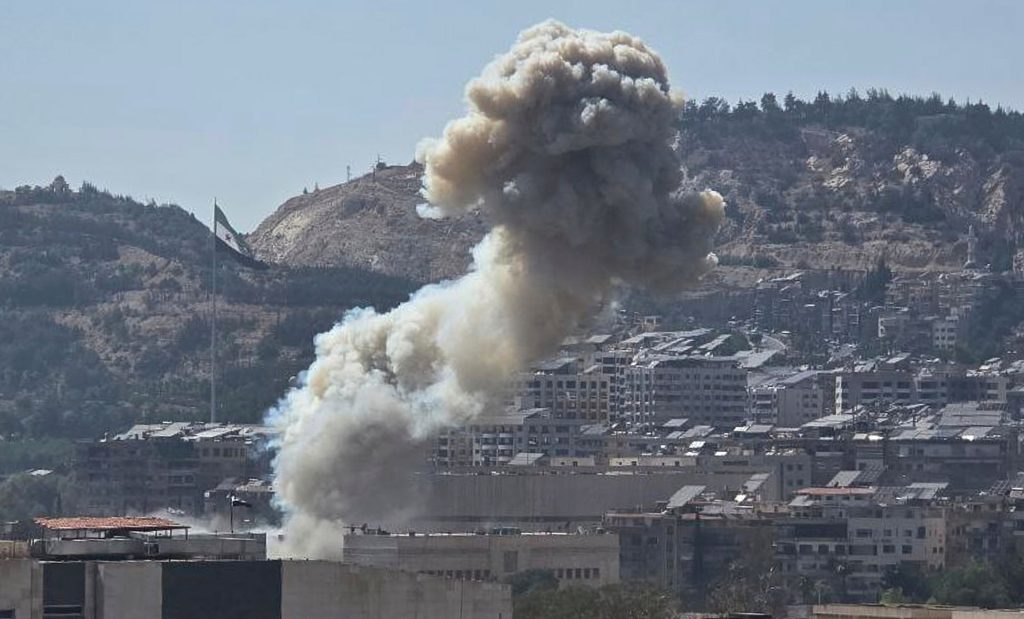
On Wednesday afternoon, Israeli Prime Minister Benjamin Netanyahu issued a video message to his country’s Druze minority. He implored them not to cross into southwestern Syria to support Syrian Druze militiamen in their fight against local Bedouin and government forces in Suwayda. And yet, as Netanyahu made the statement, his own forces were bombing the Syrian capital Damascus, hitting the country’s Ministry of Defence, and killing at least three people. Netanyahu claimed that he had deployed Israel’s military might in the defence of the Druze. “My brothers, the Druze citizens of Israel, the situation in Suweyda in southwestern Syria is very serious,” the principal architect of the 2018 nation-state law that’s been widely criticised for marginalising the Druze and other minorities said. “We are acting to save our Druze brothers and to eliminate the gangs of the regime,” he assured them, referring to the Syrian government. Israel’s Druze Sectarian tensions between the Druze and local Bedouins in Suweyda are longstanding. Meanwhile, attempts by the newly formed Syrian government, which took power after the fall of longtime dictator Bashar al-Assad in December, to assert control over the region have been frustrated in part by Israel’s repeated threats against the presence of the Syrian military near its border. There are roughly 700,000 Druze in Syria. Another 150,000 Druze live in Israel, where, at least before the 2018 law emphasising only Jewish self-determination, many regarded themselves as bound by a “blood covenant” with their Jewish neighbours since 1948 and the founding of Israel at the expense of hundreds of thousands of Palestinians who were ethnically cleansed in the Nakba. While some now feel like “second-class” citizens, the majority are still supportive of the Israeli state, where they serve in the military. Advertisement “The Israeli Druze see themselves as Druze, as Israelis, and as Arabs,” Rami Zeedan, an associate professor at the University of Kansas and the founder and editor-in-chief of Druze Studies Journal, said. “Part of the identification with Israel is the feeling of both Jews and Druze being persecuted minorities,” he added. “Israeli Druze still feel that they have much more to gain from Israel compared to any other hypothetical future. As a cornerstone of this alliance is the protection of the Druze community.” “The Israeli Druze are now trying to use that and urge the Israeli government to protect fellow Druze in Syria,” he said, explaining, in part, the justification for Israel’s strikes on Syria, where the Druze community has traditionally been anti-Israel, even as some leaders grow closer to Israel. ‘Pure opportunism’ But the reality is that Israel has long attacked Syria, even before the latest outbreak of violence involving the Druze in Suwayda. Since the ousting of al-Assad after a 14-year war, Israel has struck Syria hundreds of times and invaded and occupied about 400 square kilometres (155sq miles) of its territory, excluding the western Golan Heights, which it has occupied since 1967. Leading analysts within Israel suggest that these latest attacks may not have been entirely motivated by concern for the welfare of the Druze, so much as the personal and political aims of the Israeli government and its embattled prime minister. “It’s pure opportunism,” Alon Pinkas, a former Israeli ambassador and consul general in New York, told Al Jazeera. “Of course, it’s nice to pretend that we’re helping our friends the Druze, in the same way as we never helped our other friends, the Kurds,” he said, referring to another regional ethnic group. Pinkas sketched out a number of the motivations behind Israel’s recent strikes on Syria, from boosting Netanyahu’s newfound self-image as a wartime leader, to pushing back his corruption trial, to reinforcing the “delusion” that, over the previous 21 months, Israel has somehow managed to reshape the Middle East through military force alone. “Lastly, he doesn’t want to see a unified Syria with a strong central government controlled by al-Sharaa,” Pinkas said. “He wants a weak central government dealing with areas controlled by the Kurds [in the north] and the Druze and Bedouin in the south.” “Basically, if Syria remains un-unified, Israel can do what it wants in its south,” he added. Netanyahu has repeatedly emphasised that Israel will only stand for a demilitarised Syria south of Damascus, including the region that encompasses Suwayda. This, in effect, creates a buffer zone for Israel, adding to the military reasoning for Israel’s actions in Syria. Advertisement Hollowed out by war The attacks on Syria have the additional effect of sustaining the sense of crisis that has gripped Israeli society and sustained its government through numerous scandals since the Hamas-led attack of October 7, 2023, and the subsequent war on Gaza. Israel has since attacked Lebanon, Iran, Yemen and Syria. “It’s not that people are tired of war; it’s like they no longer even care. It’s ennui,” Israeli political analyst Ori Goldberg said of the public response to the latest attacks. “War gives people energy and meaning, but it’s fleeting. People have even forgotten about the war with Iran,” he said, referring to the 12-day war in June that prompted global fears of regional escalation. All the caveats and cautions that would normally precede military action had, Goldberg noted, been replaced by ever-fresh dangers requiring new escalations. “It’s dangerous,” he said. “Israelis don’t care about the Druze. It’s just a new threat, a new front, and now there’s this tired, ‘OK, dude. Let’s do it [attitude]’.” “War has hollowed us out.” Adblock test (Why?)
Low turnout in Togo municipal polls after deadly protests
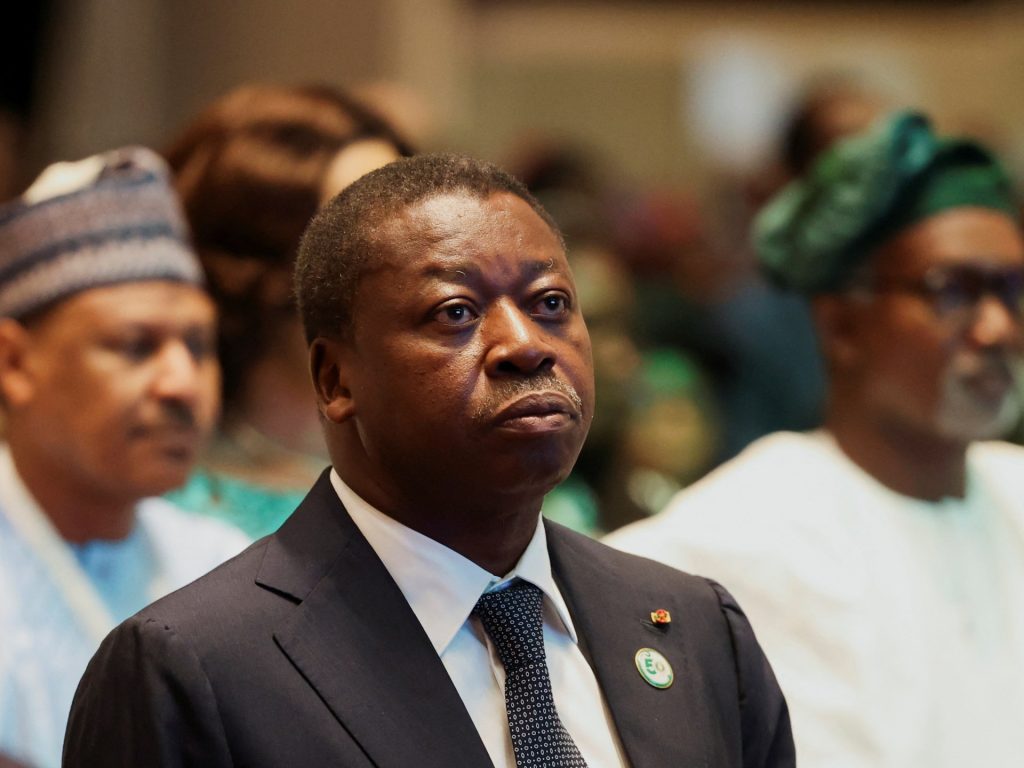
Heavy security presence in Lome amid public anger over leader Gnassingbe’s alleged power grab. Togo has voted in municipal elections amid reports of voter apathy, after the country was rocked by deadly protests last month. Polling stations in Togo’s capital Lome were largely deserted on Thursday. The low turnout came after June’s protests against constitutional reforms that could keep leader Faure Gnassingbe in power indefinitely. Rights groups blamed the police for the deaths of seven marchers in the protests, whose bodies had been fished out from the capital’s rivers by activists. “People are … afraid of being attacked by protesters for legitimising these elections, or afraid of being dispersed by security forces,” Edem Adjaklo, a voter in the Gakli neighbourhood, told The Associated Press news agency. “They feel it’s pointless to vote because the results are always the same – predetermined.” The sense of unease in Lome was reportedly heightened by a heavy police and military presence at major intersections. Despite a call for demonstrations against Gnassingbe, the streets of the seaside capital were quiet on Thursday. Gnassingbe has ruled the country since 2005, after the death of his father and predecessor as president, Gnassingbe Eyadema. The constitutional reforms, approved by a parliament dominated by Gnassingbe’s Union pour le Republic (UNIR) party, swapped the presidential system in the country for a parliamentary one. Under the reforms, Gnassingbe was sworn in two months ago as president of the Council of Ministers – effectively as prime minister – a role with no official term limits, which would allow him to be re-elected indefinitely. Advertisement Critics called it a “constitutional coup”. Diaspora-based social media influencers and civil society groups had called for a boycott of the elections, the first national vote organised since the constitutional reform. This year’s bout of protests was triggered after popular rapper and TikToker Tchala Essowe Narcisse, popularly known as Aamron, was arrested for publishing a video where he called for protests to mark the president’s June 6 birthday. Anger had also been simmering over the state of the economy, widespread unemployment and the repression of government critics. Public demonstrations have been banned in the country since protests between 2017 and 2018, which saw thousands of protesters taking to the streets in demonstrations tagged “Faure Must Go” and “Togo stands up”. Although officially a democracy, Togo operates in practice as a militarised state, with the army heavily involved in politics. Adblock test (Why?)
Israel bombs Gaza’s only Catholic church sheltering elderly and children
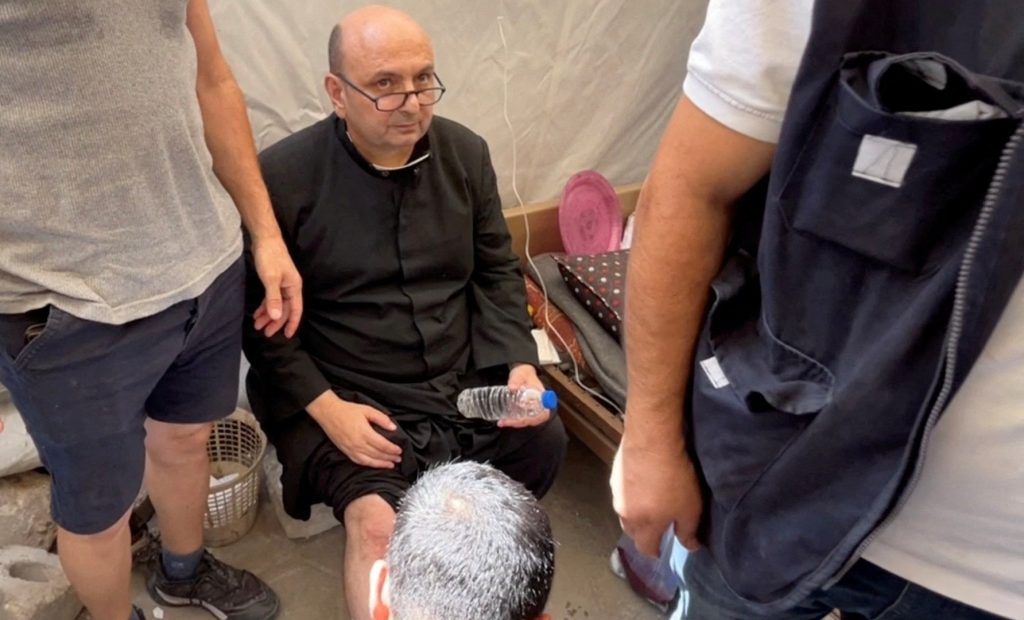
Israeli forces have bombed Gaza’s only Catholic church, killing three people and wounding at least ten others, the Latin Patriarchate of Jerusalem said, as the military continues its assault across the besieged enclave. At least one person is in critical condition as a result of Thursday’s strike on the Church of the Latin Monastery in Gaza City – known as the Holy Family Church, the Patriarchate said in a statement. The church’s priest was also lightly wounded, it added. Among those killed were the parish’s 60-year-old janitor and an 84-year-old woman who was receiving psychosocial support inside a Caritas tent in the church compound, according to the Catholic charity Caritas Jerusalem. Israeli attacks have killed at least 32 Palestinians on Thursday, including 25 in Gaza City alone, medical sources told Al Jazeera. Footage of the Holy Family Church attack published by a Palestinian activist and verified by Al Jazeera shows Father Gabriel Romanelli, the church’s pastor, following the Israeli attack. The video shows the priest with his right leg bandaged but otherwise in good condition. “The people in the Holy Family Compound are people who found in the Church a sanctuary – hoping that the horrors of war might at least spare their lives, after their homes, possessions, and dignity had already been stripped away,” the Patriarchate said in its statement after condemning the deadly attack. Shadi Abu Dawoud, a 47-year-old Palestinian Christian, said the church’s main hall was housing dozens of displaced citizens, mainly children and elderly people, and that all were “peaceful civilians”. Advertisement “My mother suffered serious injuries in the head; she was wandering in the church’s yard with other elderly women [when Israeli forces attacked],” he told Al Jazeera.”We were taken by surprise by this Israeli air strike. This is a barbaric and unjustifiable act.” Mohammed Abu Hashem, a 69-year-old man who lives beside the church, said he was in the ruins of his home when there was a huge explosion that covered the area in black smoke, adding that he never thought the Israelis would attack the church. “The Israeli air strike was massive, totally horrifying,” he said. “The horror we are living in is beyond description. No words could describe what we are living through. It is not even close to what you watch [on TV] or hear.” Father Bashar Fawadleh, the parish priest of Christ The Redeemer church in Taybeh, nearly Ramallah in the occupied West Bank, said he spoke about the attack with the assistant parish priest of the Holy Family Church in Gaza City. “He told me that the bombing was very hard. They bombed the church itself,” Fawadleh told Al Jazeera. “Our feeling is between hope and sorrow, between life and death.” Fawadleh reiterated calls for a ceasefire to stop the “horrible war in Gaza”. ‘War of extermination’ Pope Leo, the head of the Roman Catholic Church, said he was “deeply saddened to learn of the loss of life and injury caused by the military attack” on the Gaza church, according to a telegram signed on his behalf by Cardinal Pietro Parolin, the Vatican’s secretary of state. Pope Leo “assures the parish priest, Father Gabriele Romanelli, and the whole parish community of his spiritual closeness”, the telegram said. The pontiff renewed his “call for an immediate ceasefire, and he expresses his profound hope for dialogue, reconciliation and enduring peace in the region”. His predecessor, the late Pope Francis, had held nightly calls with the church’s parishioners in a show of solidarity with them. The last call took place the day before he died in April. Cardinal Pierbattista Pizzaballa, the Latin patriarch of Jerusalem, said in comments to Vatican News that an Israeli tank hit the church “directly”. “What we know for sure is that a tank – the [Israeli army] says by mistake, but we are not sure about this – they hit the church directly, the Church of the Holy Family, the Latin church,” he added. Since the start of the war on Gaza, Israel has repeatedly attacked religious sites, including mosques and churches. In October 2023, just days after the deadly assault began, the Israeli army bombed the Church of Saint Porphyrius, the Gaza Strip’s oldest, killing at least 18 people. Advertisement The Israeli military acknowledged Thursday’s attack and claimed the incident was “under review”. The Israeli Ministry of Foreign Affairs offered a rare apology and confirmed an investigation was under way. It also said Israel did not target churches or religious sites and regretted harm to them or civilians, even though it has attacked dozens of mosques and churches since the start of the war on Gaza. An independent United Nations commission report said last month that Israel has committed the crime against humanity of “extermination” by attacking Palestinian civilians sheltering in religious sites and schools in Gaza. The report by the UN Independent International Commission of Inquiry on the Occupied Palestinian Territory, including East Jerusalem and Israel, said Israel has destroyed more than half of all religious and cultural sites in the territory, as well as more than 90 percent of school and university buildings in Gaza. Meanwhile, Hamas slammed the attack as “a new crime committed against places of worship and innocent displaced persons”. “It comes within the context of the comprehensive war of extermination against the Palestinian people,” the group said in a statement shared on Telegram. Italian Prime Minister Giorgia Meloni also blamed Israel for the strike, saying attacks against “the civilian population that Israel has been carrying out for months are unacceptable”. Only about 1,100 Christians live in Gaza, according to a US Department of State report in 2024. The majority of Palestinian Christians are Greek Orthodox, but there are also Roman Catholics living there. Adblock test (Why?)
Zuckerberg settles Meta investor $8bn lawsuit for undisclosed terms

Current and former Facebook leadership reached the agreement with shareholders only one day into the trial. Mark Zuckerberg and current and former directors and officers of Meta Platforms have agreed to settle claims seeking $8bn for the damage they allegedly caused the company by allowing repeated violations of Facebook users’ privacy. Zuckerberg and his counterparts reached the agreement on Thursday with shareholders who brought the lawsuit. The parties did not disclose details of the settlement, and defence lawyers did not address the judge, Kathaleen McCormick of the Delaware Court of Chancery. McCormick adjourned the trial just as it was to enter its second day, and she congratulated the parties. The plaintiffs’ lawyer, Sam Closic, said the agreement just came together quickly. Billionaire venture capitalist Marc Andreessen, who is a defendant in the trial and a Meta director, was scheduled to testify on Thursday. Shareholders of Meta sued Zuckerberg, Andreessen and other former company officials, including former Chief Operating Officer Sheryl Sandberg, in hopes of holding them liable for billions of dollars in fines and legal costs the company paid in recent years. The Federal Trade Commission fined Facebook $5bn in 2019 after finding that it failed to comply with a 2012 agreement with the regulator to protect users’ data. The shareholders wanted the 11 defendants to use their personal wealth to reimburse the company. The defendants denied the allegations, which they called “extreme claims”. Facebook changed its name to Meta in 2021. The company was not a defendant. Advertisement The company declined to comment. A lawyer for the defendants did not immediately respond to a request for comment. “This settlement may bring relief to the parties involved, but it’s a missed opportunity for public accountability,” said Jason Kint, the head of Digital Content Next, a trade group for content providers. Zuckerberg was expected to take the stand on Monday and Sandberg on Wednesday. The trial was scheduled to run through the end of next week. The case was also expected to include testimony from former Facebook board members Peter Thiel, Palantir Technologies co-founder, and Reed Hastings, co-founder of Netflix. Longstanding concerns Meta investors alleged in the lawsuit that former and current board members completely failed to oversee the company’s compliance with the 2012 FTC agreement and claim that Zuckerberg and Sandberg knowingly ran Facebook as an illegal data harvesting operation. The case followed revelations that data from millions of Facebook users was accessed by Cambridge Analytica, a now-defunct political consulting firm that worked for Donald Trump’s successful US presidential campaign in 2016. Those revelations led to the FTC fine, which was a record at the time. On Wednesday, an expert witness for the plaintiffs testified about what he called “gaps and weaknesses” in Facebook’s privacy policies, but would not say if the company violated the 2012 agreement that Facebook reached with the FTC. Jeffrey Zients, a former board member, testified on Wednesday that the company did not agree to the FTC fine to spare Zuckerberg legal liability, as shareholders allege. On its website, the company has said it has invested billions of dollars into protecting user privacy since 2019. The trial would have been a rare opportunity for Meta investors to see Zuckerberg answer probing questions under oath. In 2017, Zuckerberg was expected to testify at a trial involving a lawsuit by company investors opposed to his plan to issue a special class of Facebook stock that would have extended his control over that company. That case also settled before he took the stand. “Facebook has successfully remade the ‘Cambridge Analytica’ scandal about a few bad actors rather than an unraveling of its entire business model of surveillance capitalism and the reciprocal, unbridled sharing of personal data,” Kint said. “That reckoning is now left unresolved.” Meta stock was down 0.4 percent for the day as of 11am in New York (15:00 GMT) and 3.1 percent over the last five days. Advertisement Adblock test (Why?)
Jabuer takes tennis break to ‘rediscover joy of living’
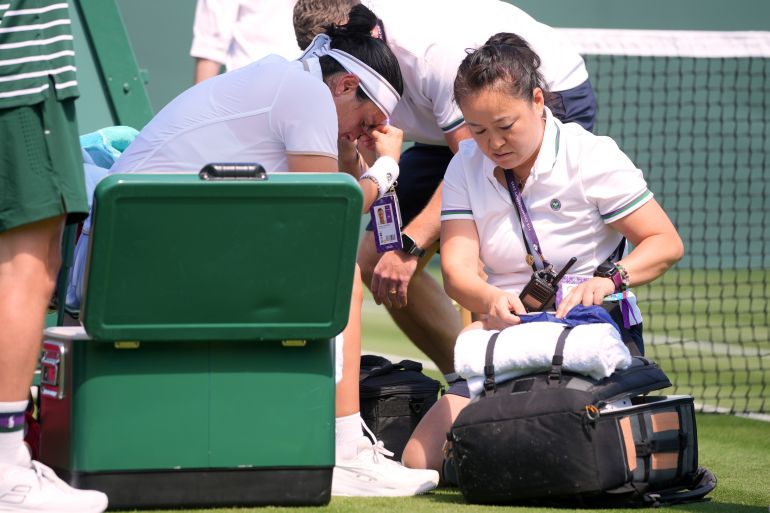
First Arab woman to reach a Grand Slam final to take break from tennis as tours take their toll. Three-time Grand Slam finalist Ons Jabeur is taking a break from competitive tennis, the 30-year-old said in a social media post. Tunisia’s Jabeur, the first Arab woman to reach a Grand Slam final, has struggled with her form in recent months, failing to get past the third round of a major this year. The two-time Wimbledon finalist’s campaign came to a disappointing end at the All England Club last month as she retired from her first-round clash against Viktoriya Tomova, unable to continue after a long medical timeout. The former world number two suffers from asthma and experienced breathing difficulties at this year’s Australian Open. Ons Jabeur of Tunisia get medical assistance during her match against Varvara Gracheva of France at the first round singles match at the Wimbledon Tennis Championships last month [Kin Cheung/AP] Jabeur, often called the “minister of happiness” for her cheerful personality, said she was not feeling truly happy on the court. “For the past two years, I’ve been pushing myself so hard, fighting through injuries and facing many other challenges. But deep down, I haven’t truly felt happy on the court for some time now,” she said in a statement. “Tennis is such a beautiful sport. But right now, I feel it’s time to take a step back and finally put myself first: to breathe, to heal, and to rediscover the joy of simply living.” Jabeur, married to former fencer Karim Kamoun, has also been open about her wish to start a family. “Thank you to all my fans for understanding. Your support and love mean the world to me. I carry it with me always,” she added. Advertisement Adblock test (Why?)
‘The love he gave’: Family vows to keep Sayfollah Musallet’s memory alive
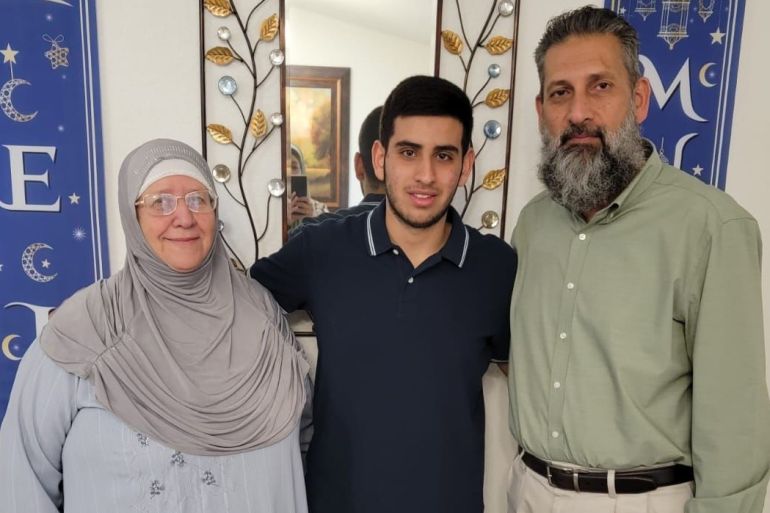
Sayfollah Musallet was a brother, a son and an ambitious young man who was just at the beginning of his life. That is the message his family has repeated since July 11, when the 20-year-old United States citizen was beaten to death by Israeli settlers in the village of Sinjil in the occupied West Bank. That message, they hope, will prevent the Florida-born Sayfollah from becoming “just another number” in the growing list of Palestinian Americans whose killings never find justice. That’s why his cousin, Fatmah Muhammad, took a moment amid her grief on Wednesday to remember the things she loved about Sayfollah. The two united over a passion for food, and Muhammad, a professional baker, remembers how carefully Sayfollah would serve the delicate knafeh pastry she sold through the ice cream shop he ran in Tampa. “Just in the way he plated my dessert, he made it look so good,” Muhammad, 43, recalled. “I even told him he did a better job than me.” “That really showed the type of person he was,” she added. “He wanted to do things with excellence.” ‘The love he gave all of us’ Born and raised in Port Charlotte, a coastal community in south central Florida, Sayfollah – nicknamed Saif – maintained a deep connection to his ancestral roots abroad. He spent a large portion of his teenage years in the occupied West Bank, where his two brothers and sister also lived. There, his parents, who own a home near Sinjil, hoped he could better connect with his culture and language. But after finishing high school, Sayfollah was eager to return to the US to try his hand at entrepreneurship. Last year, he, his father and his cousins opened the dessert shop in Tampa, Florida, playfully named Ice Screamin. Sayfollah Musallet poses for a family photo with his grandmother and uncle [Photo courtesy of family] But the ice cream shop was just the beginning. Sayfollah’s ambition left a deep impression on Muhammad. Advertisement “He had his vision to expand the business, to multiply it by many,” she said, her voice at times shaking with grief. “This at 20, when most kids are playing video games.” “And the crazy thing is, any goal that he set his mind to, he always did it,” she added. “He always exceeded everyone’s expectations, especially with the love he gave all of us.” Sayfollah’s aunt, 58-year-old Samera Musallet, also remembers his dedication to his family. She described Sayfollah as a loving young man who never let his aunts pay for anything in his presence – and who always insisted on bringing dessert when he came for dinner. At the same time, Samera said he was still youthful and fun-loving: He liked to watch comedy movies, shop for clothes and make late-night trips to the WaWa convenience store. One of her fondest memories came when Sayfollah was only 14, and they went together to a baseball game featuring the Kansas City Royals and the Tampa Bay Rays. “When we got there, he could smell the popcorn and all the hot dogs. He bought everything he could see and said, ‘We’re going to share!’” she told Al Jazeera. “After he ate all that junk food, we turned around, and he was sleeping. I woke him up when the game was over, and he goes: ‘Who won?’” ‘I really want to get married’ Another one of his aunts, 52-year-old Katie Salameh, remembers that Sayfollah’s mind had turned to marriage in the final months of his young life As the Florida spring gave way to summer, Sayfollah had announced plans to return to the West Bank to see his mother and siblings. But he confided to Salameh that he had another reason for returning. “The last time I saw him was we had a family wedding, and that was the weekend of Memorial Day [in May],” Salameh told Al Jazeera. “I asked him: ‘Are you so excited to see your siblings and your mom?’ He said, ‘Oh my god, I’m so excited.’ Then he goes, ‘I really want to get married. I’m going to look for a bride when I’m there.’” To keep the ice cream shop running smoothly, Sayfollah had arranged a switch with his father: He would return to the West Bank while his father would travel to Tampa to mind the business. But that decision would unwittingly put Sayfollah’s father more than 10,000 kilometres away from his son when violent Israeli settlers surrounded him, as witnesses and his family would later recount. Israeli authorities said the attack in Sinjil began with rock-throwing and “violent clashes … between Palestinians and Israeli civilians”, a claim Sayfollah’s family and witnesses have rejected. Advertisement Instead, they said Sayfollah was trying to protect his family’s land when he was encircled by a “mob of settlers” who beat him. Even when an ambulance was called, Sayfollah’s family said the settlers blocked the paramedics from reaching his broken body. Sayfollah’s younger brother would ultimately help carry his dying brother to emergency responders. The settlers also fatally shot Mohammed al-Shalabi, a 23-year-old Palestinian man, who witnesses said was left bleeding for hours. “His phone was on, and he wasn’t responding,” his mother, Joumana al-Shalabi, told reporters. “He was missing for six hours. They found him martyred under the tree. They beat him and shot him with bullets.” Palestinians cannot legally possess firearms in the occupied West Bank, but Israeli settlers can. The Israeli government itself has encouraged the settlers to bear arms, including through the distribution of rifles to civilians. The Office of the United Nations High Commissioner for Human Rights (OHCHR) has recorded the killings of at least 964 Palestinians at the hands of Israeli forces and settlers in the occupied West Bank since October 7, 2023. And the violence appears to be on the rise. The OHCHR noted that there was a 13-percent increase in the number of killings during the first six months of 2025, compared with the same period last year. ‘Pain I can’t
Why did Israel bomb Syria? A look at the Druze and the violence in Suwayda
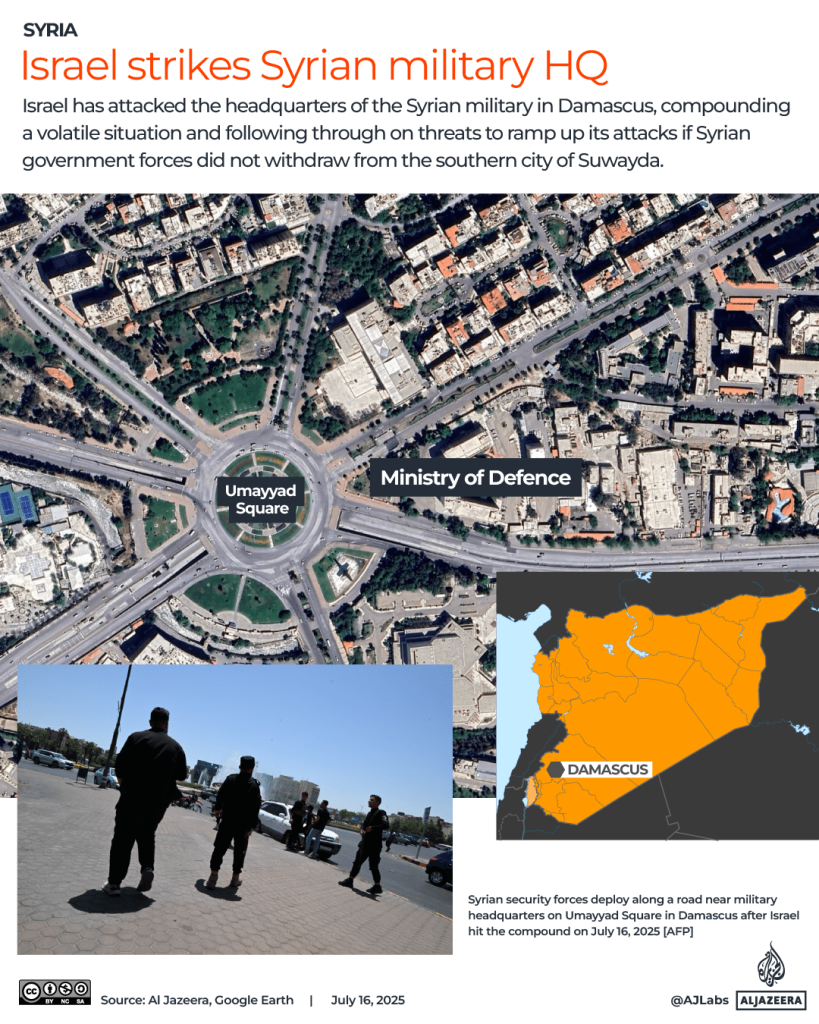
Israel has launched a series of intense strikes on Damascus, Syria’s capital, intensifying a campaign it says is in support of an Arab minority group. Syria, on Wednesday, strongly condemned Israeli attacks, denouncing the strikes as a “dangerous escalation.” The Ministry of Foreign Affairs accused Israel of pursuing a “deliberate policy” to “inflame tensions, spread chaos and undermine security and stability in Syria”. The strikes killed three people and injured 34, according to Syrian officials. Here is what we know: What happened in Syria on Wednesday? Israel carried out a series of air strikes on central Damascus, hitting a compound that houses the Ministry of Defence and areas near the presidential palace. The Israeli military also struck targets in southern Syria, where fighting between Druze groups, Bedouin tribes, and Syrian security forces has continued for more than four days. According to the Syrian Observatory for Human Rights, more than 250 people have been killed in Suwayda province during the clashes. Israel, which already occupies the Syrian Golan Heights, says its operations aim to protect the Druze minority – whom it considers potential allies – and to strike pro-government forces accused of attacking them. Syria rejected this and called the attack a “flagrant assault”. Where did the attacks happen? The main attacks focused on central Damascus: the Defence Ministry, military headquarters and areas surrounding the presidential palace. Additional strikes were carried out further south. Advertisement Syria’s Defence Ministry headquarters: The compound was struck several times, with two large strikes about 3pm (12:00pmGMT), including its entrance, causing structural damage and smoke rising visibly over the city. “Israeli warplanes [were] circling the skies over the Syrian capital,” Al Jazeera’s Zeina Khodr said, reporting from Damascus. “There was panic in the city,” she added. Near the presidential palace (Umayyad Square): Strikes also hit areas immediately around the presidential palace in central Damascus. Another air strike landed near the presidential palace in Damascus. In a post on social media, Israel said “a military target was struck in the area of the Syrian regime’s Presidential Palace in the Damascus area”. In the south: Israeli drones also targeted Syria’s city of Suwayda, a mainly Druze city close to the border with Jordan. (Al Jazeera) Why did Israel bomb Syria? Israel’s air strikes followed days of deadly clashes in Suwayda between Syrian government forces and local Druze fighters. The violence began with tit-for-tat kidnappings and attacks between Druze fighters and local Bedouin tribes. When government troops intervened to restore order, they ended up clashing with Druze groups – and, in some cases, reportedly targeted civilians. The Druze, a small but influential minority in both Syria and Israel, are seen in Israel as loyal allies, with many serving in the Israeli military. A ceasefire declared on Tuesday quickly collapsed, and fighting resumed the next day. Suwayda’s Druze appear divided. One leader, Yasser Jarbou, declared that a ceasefire had been agreed with the Syrian government. Another, Hikmat al-Hijri, rejected any ceasefire. And many Druze in Syria do not want Israel to intervene on their behalf. Israel has its own considerations and has been attempting to expand its control in southern Syria since the fall of President Bashar al-Assad in December. Israel has shunned any attempts to come to a security agreement with Syria and has instead repeatedly bombed the country this year. Many analysts believe that Israel would prefer a weak Syria over a country it believes could potentially threaten it should it grow strong. Intensifying attacks Israel, citing a commitment to protect the Druze and prevent hostile forces from gaining ground near its borders, warned Wednesday it would escalate its operations unless Syrian troops withdrew from Suwayda. The province sits near both the Israeli and Jordanian borders, making it a key strategic zone. Advertisement “This is a significant escalation,” Khodr, Al Jazeera’s correspondent, said. “This is the Israeli leadership giving a very, very direct message to Syria’s new authorities that they will intensify such strikes … if the government does not withdraw its troops from southern Syria.” As part of its campaign, Israeli forces struck the General Staff compound in Damascus, which it said was being used by senior commanders to direct operations against Druze forces in Suwayda. Israeli officials said the strikes were also aimed at blocking the buildup of hostile forces near Israel’s frontier. Shortly after the Damascus attacks, Syria’s Ministry of Interior announced a new ceasefire in Suwayda. According to state media, government troops began withdrawing from the area. Syrian response Syria condemned the Israeli strikes as a violation of international law, a stance echoed by several Arab governments. Syria’s new government has been trying to assert control, but it has struggled to do so in Suwayda, in part due to repeated Israeli threats against any government military presence in the province. “The Israelis are not going to allow the Syrian government to spread its authority all over the territory,” said Ammar Kahf, executive director of Omran Center for Strategic Studies, who is based in Damascus. With the fall of al-Assad’s government and the infancy of a new one, Israel is trying to impose its will on the new leadership, he said. “We are still in the early stages, but this requires all Syrians to come together. For a foreign government to come in and destroy public property and destroy safety and security is something that’s unexplainable,” Kahf told Al Jazeera. The Syrian government has now announced that army forces will begin withdrawing from the city of Suwayda as part of a ceasefire agreement. It did not mention any pullout of other government security forces. Adblock test (Why?)
‘It’s just better!’ Trump says he has convinced Coca-Cola to use cane sugar
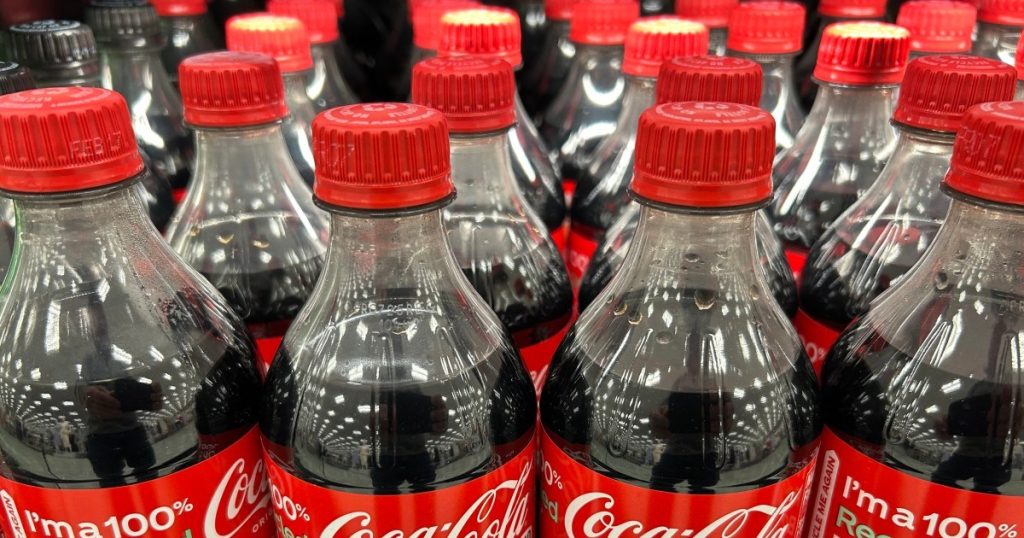
Beverage giant declines to either confirm or deny change to ingredients in its signature soft drink. United States President Donald Trump has announced that Coca-Cola will start using cane sugar instead of high-fructose corn syrup in its US-made soft drink at his urging. “I have been speaking to Coca-Cola about using REAL Cane Sugar in Coke in the United States, and they have agreed to do so,” Trump said in a post on Truth Social on Wednesday. “I’d like to thank all of those in authority at Coca-Cola.” Trump said the switch would be a “very good move”, adding: “You’ll see. It’s just better!” Coca-Cola neither confirmed nor denied Trump’s announcement, but said it appreciated the president’s “enthusiasm for our iconic Coca-Cola brand”. “More details on new innovative offerings within our Coca-Cola product range will be shared soon,” the Atlanta, Georgia-based company said in a brief statement. “I have been speaking to @CocaCola about using REAL Cane Sugar in Coke in the United States, and they have agreed to do so. I’d like to thank all of those in authority at Coca-Cola. This will be a very good move by them — You’ll see. It’s just better!” –President Donald J. Trump pic.twitter.com/9L27oxlYUj — The White House (@WhiteHouse) July 16, 2025 Trump, who is known for his love of Diet Coke, did not explain his push to change the original version of the soft drink’s ingredients, but his health secretary, Robert F Kennedy Jr, has harshly criticised the prevalence of high-fructose corn syrup in the American diet. Kennedy, who has pledged to wage war on ultra-processed foods containing ingredients rarely found in kitchen cabinets, has called the sweetener “just a formula for making you obese and diabetic”. Advertisement High-fructose corn syrup, which is derived from corn starch, is favoured by many US manufacturers because it is cheaper than sugar, in part due to government subsidies for corn and tariffs on sugar imports. Coca-Cola began using high-fructose corn syrup in its US production in the 1980s, but still uses cane sugar in many versions of its signature beverage made overseas, including Mexico, whose version of the drink has developed a cult-like following for its supposedly superior taste. While Americans’ high sugar intake is a major contributor to nearly three-quarters of the population being overweight or obese, there is currently no scientific consensus to suggest high-fructose corn syrup is less healthy than cane sugar or other sweeteners. In a 2018 fact sheet, the US Food and Drug Administration said it was “not aware of any evidence” of a “difference in safety” between foods containing high-fructose corn syrup and those with other sweeteners, such as sugar and honey. Adblock test (Why?)
Israel bombs Syria’s Druze city of Suwayda hours after ceasefire
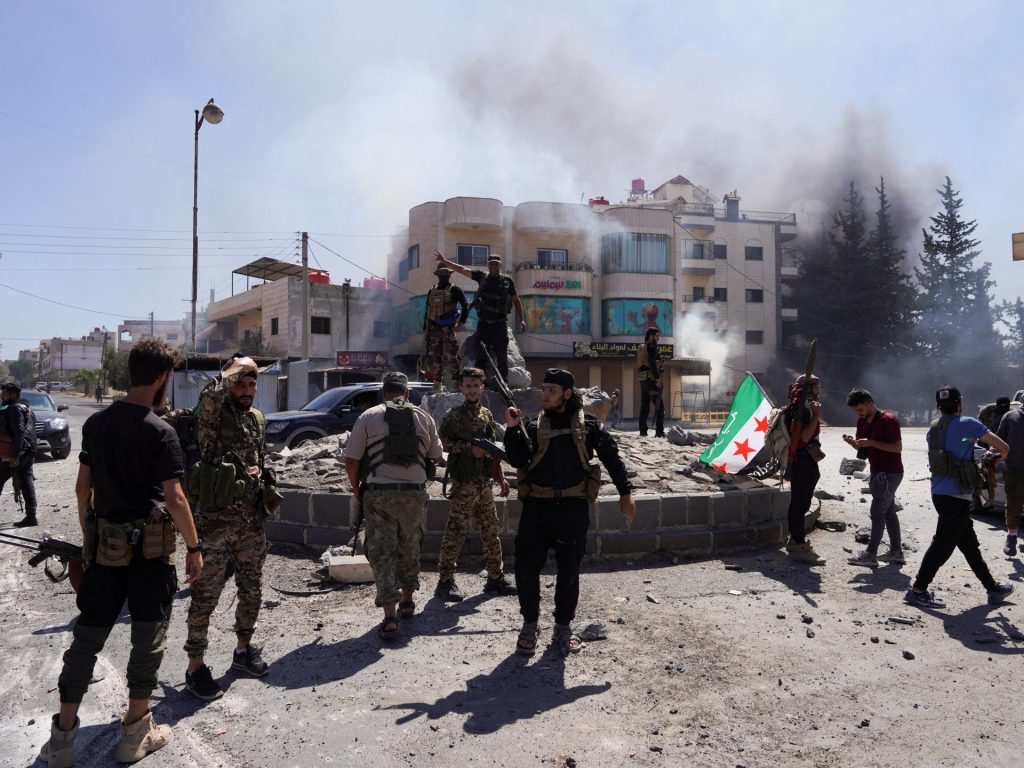
The Israeli bombings come after the Syrian government and a Druze leader both said the truce had been broken. Israeli forces have launched air strikes on Suwayda in southern Syria, as fighting returned to the predominantly Druze city hours after the Syrian government declared a ceasefire. The Syrian Ministry of Interior said in a statement on Tuesday that armed groups had resumed attacks on Syrian government forces with support from the Israeli Air Force. Syria condemned Israel’s intervention as a violation of international law, while influential Druze Sheikh Hikmat al-Hajri said in a statement that it was Syrian government troops who breached a truce announced earlier in the day. The Israeli air attacks came after Hikmat al-Hajri urged local fighters to confront what he described as a barbaric attack from government forces. Israel has claimed its attacks on the southern Syrian region bordering Israel are meant to protect the Druze minority, which it sees as potential allies. In a statement shared on social media, Israeli Minister of Diaspora Affairs Amichai Chikli said that Israel could not “stand idly by” as the Druze engaged in fighting. “We see massacres and insults against the Druze, and we must fight against the terrorism regime in Syria,” Chikli said, claiming it was a “grave mistake” to acknowledge Syrian President Ahmed al-Sharaa as the “legitimate leader” of the country. Fighting between Bedouin tribes and local Druze fighters has reportedly killed more than 30 people and injured more than 100 since Sunday in Suwayda. Bedouin and Druze armed factions have a longstanding feud in Suwayda, with violence occasionally erupting. Advertisement United States envoy to Syria Tom Barrack said Washington was in contact with all sides “to navigate towards calm and integration”. Al Jazeera’s Osama Bin Javaid reporting from Damascus said that the situation in Suwayda has “further escalated, with multiple Israeli drone and air strikes they claim are in support of Druze fighters”. Syrian government declared ‘complete ceasefire’ The latest developments come hours after Syrian Minister of Defence Murhaf Abu Qasra declared a truce in a post on social media, saying: “To all units operating within the city of Suwayda, we declare a complete ceasefire.” Abu Qasra’s announcement came shortly after the ministry deployed government forces to halt the fighting between Bedouin tribes and local fighters. The recent fighting was the first outbreak of deadly violence in the area since fighting between members of the Druze community and security forces killed dozens of people in April and May. Syria’s Druze population numbers about 700,000, with Suwayda being home to the sect’s largest community. The Druze religious sect is a minority group that originated as a 10th-century offshoot of a branch of Shia Islam. In Syria, the Druze primarily reside in the southern Suwayda province and some suburbs of Damascus, mainly in Jaramana and Ashrafiyat Sahnaya to the south. Since the overthrow of longtime Syrian ruler Bashar al-Assad in December, concerns have been raised over the rights and safety of minorities under the new authorities, who have also struggled to re-establish security more broadly. In April, hundreds of Alawite civilians were killed in apparent retribution after fighting broke out between government forces and armed groups loyal to al-Assad, who belongs to the Alawite religious sect. Israel has launched hundreds of air strikes on neighbouring Syria since December 2024, averaging one every three to four days. The latest attacks come as the Netanyahu government continues to wage war on Palestinians in the Gaza Strip, killing at least 58,479 people since October 2023. As well as Gaza and Syria, Israel has also launched attacks on the occupied West Bank, Lebanon, Iran and Yemen in recent months. Adblock test (Why?)
Indonesia arrests 12 for trafficking babies to Singapore
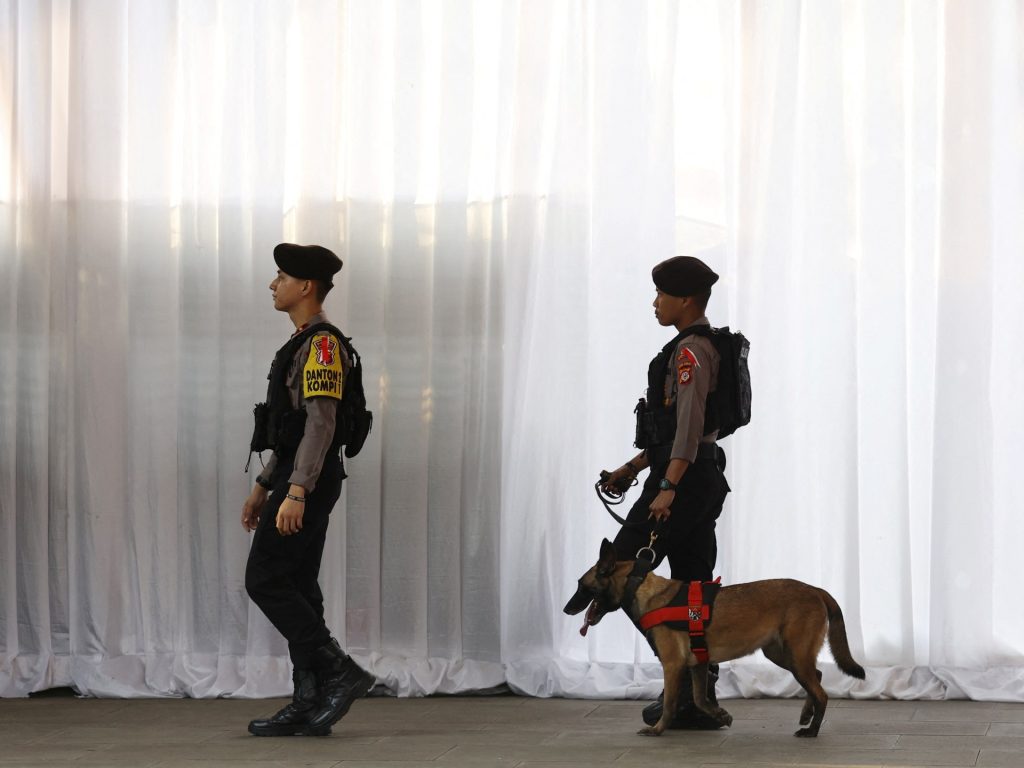
Police say the suspects have sent more than a dozen babies to Singapore for adoption. Police in Indonesia have arrested 12 people after uncovering a human trafficking ring that has sent more than a dozen babies to Singapore for adoption. The West Java police told reporters on Tuesday that the case was discovered after a parent reported an alleged baby kidnapping, which led them to a suspect who admitted to trading 24 infants. Surawan, the police’s director of general criminal investigation, who goes by one name, said the perpetrators took most of the infants from their biological parents in West Java province. They are accused of moving the babies to Pontianak city on Borneo island and then sending more than a dozen of them onwards to Singapore. “Based on documents, 14 [babies] were sent to Singapore,” he said. “The age range is clearly under one year old, with some three months old, five months old, and six months old.” Authorities managed to rescue five babies in Pontianak and one in Tangerang, a city near the Indonesian capital, Jakarta. They also arrested a dozen suspects across Jakarta, Pontianak and the Javan city of Bandung. “They are a syndicate, a baby trafficking syndicate. They each have their own roles,” said Surawan. Some of the suspects were allegedly tasked with finding the babies, he said, while others cared for them, sheltered them or prepared civil registration documents, such as family cards and passports. The police officer added that the infants were to be sold for 11 million Indonesian Rupiah ($676) to 16 million Indonesian Rupiah ($983) to buyers for adoption in Singapore. Advertisement The syndicate had been in operation since 2023, he said, based on suspect statements. Police said they sought out “parents or mothers who refuse to care for their children” in return for money. Surawan said the parent who reported a kidnapping “actually had an agreement” with the smugglers before their child’s birth, but reported them when they did not receive payment afterwards. He added that police in Indonesia intend to coordinate with Interpol to “locate possible trafficked infants in Singapore”. Human trafficking is also a domestic problem across Southeast Asia’s biggest economy, a sprawling nation of more than 17,000 islands. In one of the worst cases in recent years, at least 57 people were found caged on a palm oil plantation in North Sumatra in 2022. Adblock test (Why?)

